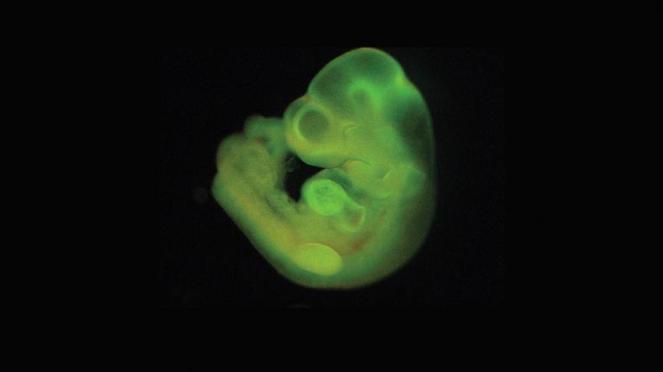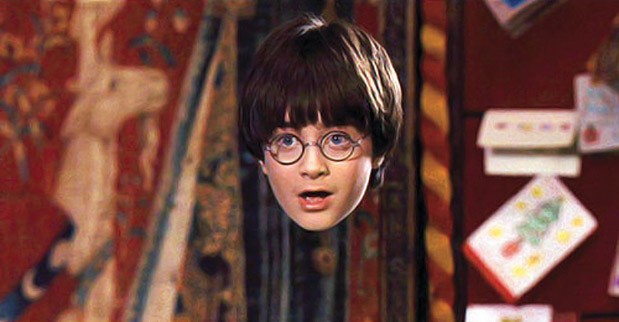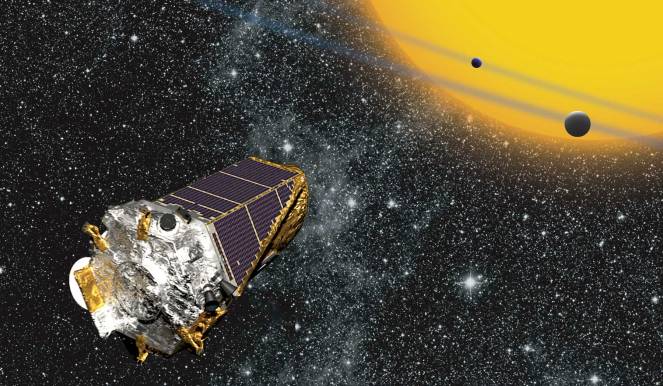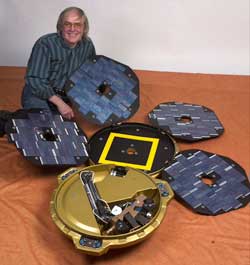Christmas is well and truly over, summer seems to be a long way off, a lot of us have got a case of the January blues. Don’t fret, the dreaded month of January isn’t bad on every level – scientists seem to like to start the year on a high. Lets take a look back on how the years began in the first half of the decade.
January has brought breakthroughs in technology and medicine with the first bionic hand and the first $1000 genome. It gave us the launch of the major crowd sourcing initiative ‘Stargazing live’. But not all science can be positive, January also provided stories on the threat of bioterrorism and had it’s fair share of Olivia Pope sized scandals.
After I started research for this feature I very quickly realised the article is going to get quite long, so I have broken it down into easy to digest little chunks and organised it into categories; Biology, Medicine, Physics, Technology and Space. Let’s kick it off with my field.
Biology
DNA isn’t only the code of life
 The past 20 years has seen technology advance at an exponential rate and the first half of this decade has been no different. One good example is the amount of smartphone users world wide has more than tripled in the last 5 years!
The past 20 years has seen technology advance at an exponential rate and the first half of this decade has been no different. One good example is the amount of smartphone users world wide has more than tripled in the last 5 years!
With technology moving forward at lightning speed so is the amount of data we are producing, introducing another challenge: how are we going to store it all? From being able to store all those selfies that are so easily snapped on smart phones to storing the almost inconceivable amounts of data scientists are now able to generate, everyone needs a good way to store those gigabytes.
With the news that Illumina Inc. sequenced the first $1000 genome in January 2013, significantly cheaper than the $2.7 billion it cost to sequence the first human genome, we need new ways of storing all this information. The answer possibly lies in the genome itself – January 2013 also saw the announcement of large amounts of information being encoded in DNA including the complete sonnets of Shakespeare by researchers at the European Bioinformatics Institute (EBI).
The principle is similar to the way a computer stores information as a unique sequence of ‘ones’ and ‘zeroes’ known as binary code; DNA uses a code comprised of 4 letters ‘A’, ‘T’, ‘G’ and ‘C’. In nature DNA holds the code to making life but scientists are able to make it synthetically so that it codes for anything we want including mp3s and pdfs. DNA has the advantage of being very stable as long as it kept cool and dry – we are able to extract it from the bones of Woolly Mammoths that lived tens of thousand of years ago – and it is extremely small. The EBL press release predicts that in just one cupful of DNA we could store 100 million hours of HD video!
Scientists are now working on ways to reduce error in the data copying and scale up the production to produce commercially available DNA storage systems that could revolutionise the way we store everything.
Original paper: Towards practical, high-capacity, low-maintenance information storage in synthesized DNA
Curing disease by dipping cells in acid

-
Mouse embryo claimed to have been grown from STAP cells. Source Sciencemag.org
This was a story that hit the headlines in January 2014 with the claim that adult cells could be turned back to an embryonic like fate to produce stem cells, by exposing them to acidic conditions for as little as 30 minutes. Why was this such a big story? The potential applications of stem cells are huge, with the hope that they will one day cure many genetic and degenerative diseases such as Parkinson’s, diabetes and potentially some cancers. Stem cell therapies would work on the basis of replacing faulty cells with healthy ones that could incorporate into the body and carry out their vital function.
One of the main hurdles of stem cell therapy is the possibility of immune rejection. When a foreign object enters your body your immune system is designed to fight it off. This is great for fighting off infections, but if you are trying to use foreign cells as a treatment it can cause major complications. To get around this scientists want to use a patients own cells to treat them. If we can take adult skin cells, spleen cells or some other type and turn them back into stem cells then we unleash the capability of getting them to develop into any cell type we need, and because they originally came from the same patient the immune system will not attack them. Unfortunately this is far easier said than done.
Stem cells are what makes a fertilised egg be able to produce all the different cells, tissues and organs of a mature organism. There are different classes of stem cells that have the ability to become different cell types, but the focus of this research by Japanese scientist Obokata was pluripotent stem cells – cells that are able to develop into any cell type found in a mature organism if given the right signals. This research group claimed they were able to take adult mouse cells and revert them back into pluripotent stem cells by exposing them to different stresses such as toxins or weak acid. They called these cells ‘Stimulus-triggered acquisition of pluripotency’ cells or the much catchier ‘STAP cells‘.
This isn’t the first time scientists have encouraged adult cells to behave in a way more like embryonic cells, iPS cells (induced pluripotent stem cells) won the Nobel Prize for Yamanaka and Gurdon in 2012, but this required a very specific induction by a very tightly regulated group of factors. A far cry from the simplicity being claimed by the creators of STAP cells.
STAP cells could hold the key to fast and scalable production of stem cells that would be able to produce any of the tissues in an adult. The paper they published in Nature showed them growing a whole range of different mouse cell types, including muscle and blood cells, and even into a whole mouse embryo! All from STAP cells? This sounds amazing right? There was one tiny problem though. After reading this ground-breaking research many labs around the world tried to do the same, with no success. This obviously casts a cloud of doubt over the results and asks whether this technique is actually possible.
Developments in this story, which has potentially been one of the widest covered investigations into scientific practice we have seen this decade, continued throughout the year. So check back in my following features to find out what happened…
Medicine
A Helping hand
You could be forgiven for thinking hand transplants seem like something from the work of Dr Frankenstein and bionic hands are restricted to the world of sci-fi but in January 2013 both became a reality in British medicine.
Although hand transplants had been carried out before, this was the first in the world where the recipients old hand was removed in the same operation as the new hand was attached. The recipient was Mark Cahill who lost the use of his hand due to an infection, but the hand had not been amputated. On boxing day of 2012 Mark went under the knife for a very complex operation that would require fine surgical work to reconnect bone, tendons, blood vessels and nerves to ensure his new hand would be functional. The good news broke on 4th January 2013 when doctors revealed the operation had been a success and Mark was recovering well. This new surgical procedure was a great success, 2 years later in 2015 doctors revealed that Cahill was on track to recover 75% functionality in the new hand and was now able to tie his shoes and pick up his new granddaughter.
Check out this video that shows some of the fine surgical worked required to attach a new hand
Video Source: “Hand Transplant Surgical Procedure Animation” Uploaded by KentuckyOne Media Services on YouTube
Now to the bionic hand, a great example of science fiction becoming science fact. The ‘Michelangelo Hand’ allows the user to control the movement of the fingers in the same way they normally would, with their mind!
The prosthetic arm uses myoelectric sensors which are able to detect the electrical signals that pass through muscles and nerves when you move them. To move your fingers your brain sends electronic signals, known as action potentials, to your spinal cord and out to the corresponding nerves. This then causes electrical activity in the responding muscle resulting in movement. The myoelectric sensors simulate the transmission of the electrical signals from the nervous system in the arm to the muscles of the hand; the signals reach the sensor and are processed by specially designed software to move the prosthetic hand.
This technology allowed Chris Taylor, the first person in the UK to receive a ‘Michelangelo Hand’, to regain an incredible amount of function with enough fine control to fasten a button.
You can see just how well the bionic hand works on the Michelangelo hand website.
The flu threatens national security

Photograph by Chad Baker/Ryan McVay. Source: Slate.com
The majority of peoples worst experience of the flu is being stuck in bed for a week or two, shivering, coughing, aching, and just generally feeling pretty damn ill. Some people may have experienced some heartbreaking cases of loss during some of the recent flu out breaks, like the Swine flu pandemic of 2009. But I’m sure few people would have thought that flu virus would be a cause of concern for national security.
In January 2012, the threat of bio-terrorism became very real when virologists discovered how to mutate the H5N1 virus, the one that causes bird flu, to give it the ability to be transmitted through the air. This could be catastrophic! The H5N1 virus kills about half of the humans who catch it, but luckily in nature the virus doesn’t have the ability to spread easily through the air like other strains that usually effect humans can. If it did become an airborne strain it would likely cause a deadly pandemic that civilisation may struggle to survive.
The problem therefore arises in deciding who should be able to get their hands on this information? There is a constant pressure in science to disclose as much information as possible in scientific publications, to ensure work and results can be tested and validated. However, there was fear that information published on H5N1 could be used by terrorists.
You might be asking “Why are we even doing research to create potentially pandemic causing strains of these viruses?” Well we need to know what to look for in the strains that are in nature so we can screen and keep on top of any potentially deadly viruses.
So in January 2012, scientists agreed to halt all research on the H5N1 virus until decisions had been made on how to handle such deadly information. Initially the hiatus was only supposed to last 60 days but, as many people had predicted at the time, the discussions about security took a lot longer. Just over a year later on 23rd January 2013 the research resumed, but only in countries where clear rules had been put in place to conduct the research safely.
Physics
A step closer to an invisibility cloak

Whether it’s to spy on your latest crush, be a fly on the wall during important meetings or to be able to get up to mischief without being seen, I’m sure the majority of us have at some point thought how helpful it would be to own a Harry Potter-esque invisibility cloak. Science is in no way at the point of making a whole person invisible but we are making steps in the right direction.
January 2012 saw the first successful attempt at cloaking a 3D object from all angles using plasmonic metamaterials. Metamaterials are man made materials that have been engineered to have properties that are not seen in nature; in the case of plasmonic metamaterials they have properties of interacting with light that we don’t see in the natural world.
Usually when light strikes an object, depending on the properties of the material it is made up of, it rebounds off the surface in a different direction. Like if you threw a ball against a wall. The light rebounding off an object and hitting our eyes is what allows us to see it.
With these new plasmonic metamaterials the opposite happens, when light strikes it and the object it is cloaking the scattered light from the object and the cloak cancel each other out and the object seems to be invisible.
Before you get too excited though they were only able to ‘cloak’ the object in the the ‘microwave’ part of the spectrum. This means that the object wasn’t actually invisible from human view as the human eye can only detect a very small portion of the different wavelengths of light that exist in the universe, microwaves are longer than what our eyes are able to detect.
There is the potential to cloak things from visible light but as it stands the ability of plasmonic metamaterials to cloak objects would scale with the wavelength of light you are trying to hide it from. So because the wavelength of visible light is much smaller than that of microwaves, only very tiny objects could be made to disappear.
It looks like we are going to have to wait a bit longer before we can buy our own invisibility cloaks.
Original paper: Experimental verification of three-dimensional plasmonic cloaking in free-space
Technology
The world in 3D
 Source: Edible Growth Project
Source: Edible Growth Project
It seems the human race is no longer content with experiencing things in 2D. 3D movies are now very much the norm, 3D printing is an everyday term, you can even buy pens that allow you to draw in 3D!
3D technology is by no means new to this decade, the first full patent for a 3D printer was filed in 1986, but this decade has seen an increase in the availability and the scale of 3D printing projects, some that initially seem a bit bizarre.
I’m sure we’ve all had cravings for our favourite food, that feeling of ‘I want that right NOW!’ Well 3D printing might be able to make that a reality! In January 2011 scientists working on the Fab@Home project at Cornell University revealed a 3D printer capable of printing edible food! You can see it at work on their Youtube channel FabAtHome.
To create something using a 3D printer the design must first be created using 3D design software in a programme that allows the computer to cut the design into very thin slices. The printer then produces each layer on top of the other starting from the bottom working up, a bit like how laser printers lay down each layer of colour on top of each other.
So as long as you can design it on a computer and the material is able to be liquid to pass through the printer you can theoretically print anything you want, including food! New York entrepreneur Jamil Yosefzai was hoping to be at the forefront of the technology and told CNN he predicts the technology could become a house hold staple within the decade. We’re not quite there yet but Yosefzai’s company Essential Dynamics do have 3D food printers for sale. So if you are really desperate to print your own cookies or burgers and have a spare $4000, give it a go!
A lot of these 3D food printers rely on ingredients such as sugar and chocolate due to being able to melt them and then solidify them easily. But other projects are working on creating much healthier 3D printed foods, check out the really interesting work being done for the Edible Growth Project.
Space
Will you be the next person to discover a new planet?

-
Artist impression of Kepler
This decade has also seen a surge in the general public being involved in scientific discoveries with the increase in crowdsourcing science projects, such as planethunters.org. This was set up to help trawl through the mountains of data collected by NASA’s Kepler telescopes. The hunt was on to find new exoplanets, including ones that could possibly be habitable, by looking for a reduction in light in images due to a planet orbiting a star. Computers had been and still are used for this job, but the project was set up with the thinking that maybe sometimes human pattern recognition might just beat the machines.
A boost in public knowledge for the project came in the form of the BBC 2 program ‘Stargazing Live’, hosted by Physicist, and in the view of many the ‘heart throb’ of science, Prof. Brian Cox and Irish comedian and self confessed lover of science Dara O’Briain. Volunteers for the planet hunters project more than tripled after it appeared on the show and success came just days later when a volunteer from Peterborough, UK, found a previously undiscovered, Neptune sized planet. It was later determined that the planet was probably too hot to support life, but its another great discovery on our mission to better understand our galaxy.
The project is still running, so why not try to be the next person to discover a new planet!
Finally.. Recognise this guy?
Not the man, the machine…

Beagle 2 model with creator Prof. Colin Pillinger. All rights reserved Beagle 2.
It’s the Beagle 2! It was thought to be lost on Mars after it landed nearly 12 years previously but never made contact with Earth. But we found it again in January 2015!
I do love a happy ending!
Remember, these features will be continuing throughout the year with the next one bringing you some of the best discoveries the month of February had to offer. See you then!
